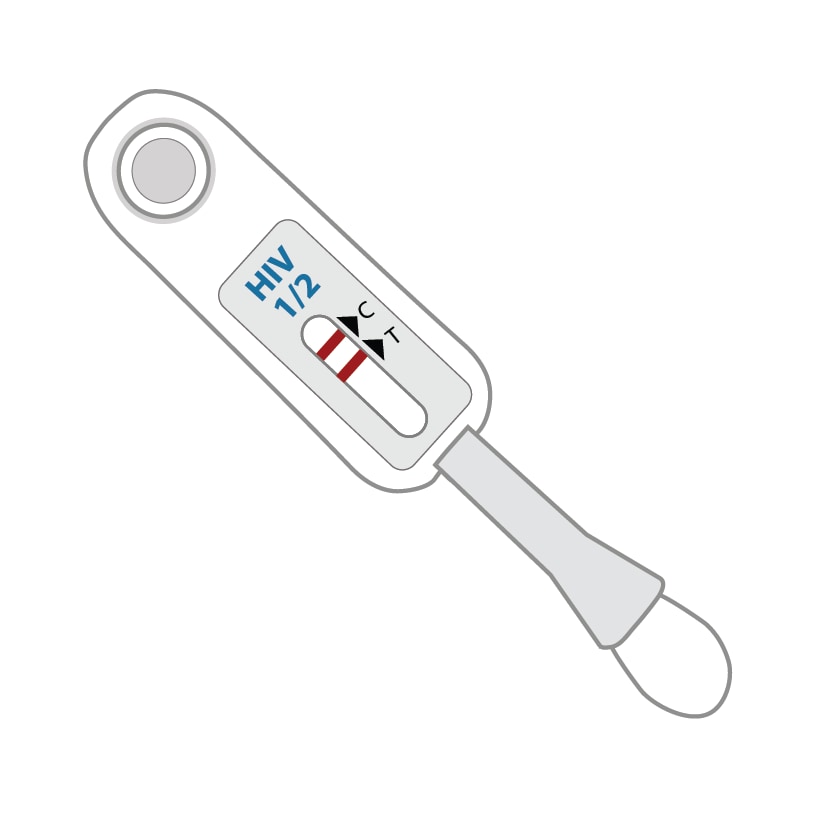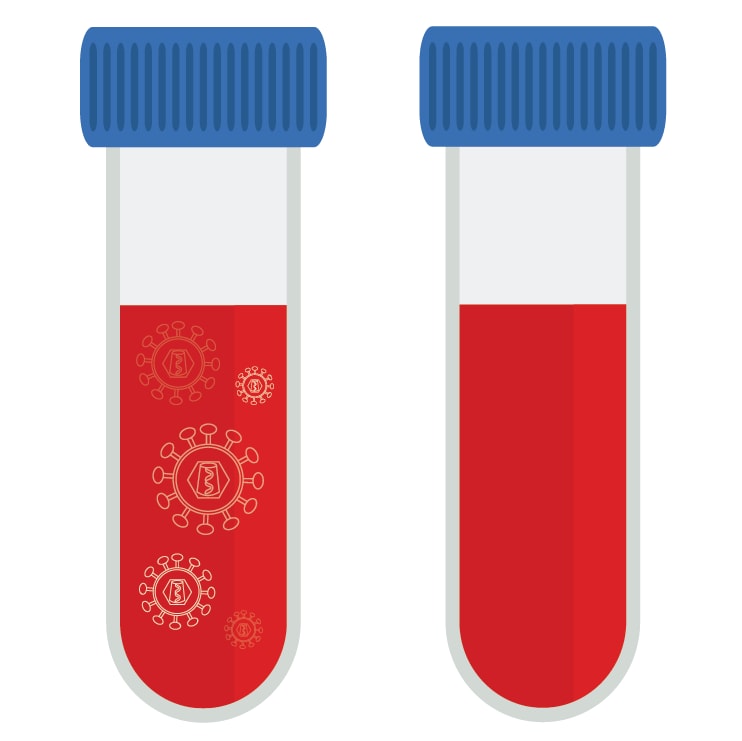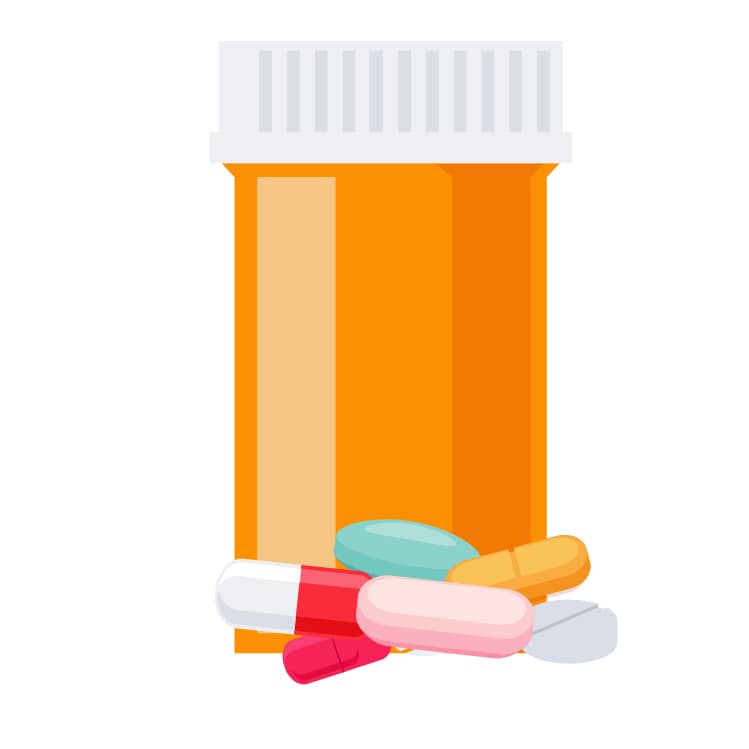HIV and Transgender People: What CDC Is Doing
CDC is pursuing a high-impact HIV prevention approach to maximize the effectiveness of HIV prevention interventions and strategies for transgender people. Funding state, territorial, and local health departments and community-based organizations (CBOs) to develop and implement tailored programs is CDC’s largest investment in HIV prevention. This includes longstanding successful programs and new efforts funded through the Ending the HIV Epidemic in the U.S. initiative. In addition to funding health departments and CBOs, CDC is also strengthening the HIV prevention workforce and developing HIV communication resources for consumers and health care providers.
- In 2022, CDC will fund organizations to work in clinics that serve transgender people and partner with transgender-serving CBOs to develop community-to-clinic models for integrated status-neutral HIV prevention and care services and gender-affirming services, including hormone therapy and primary health care.
- In 2021, CDC released a National HIV Behavioral Surveillance (NHBS) report [PDF – 2 MB] that used NHBS methods to conduct a behavioral interview and HIV testing among transgender women (NHBS-trans).
- In 2020, CDC released national HIV surveillance reports by gender which include data for transgender people for three Ending the HIV Epidemic in the U.S. core indicators: diagnoses of HIV infection, linkage to HIV medical care, and viral suppression. CDC will continue to provide core indicators by gender in future surveillance reports.
- Under the integrated HIV surveillance and prevention cooperative agreement, CDC awards around $400 million per year to health departments for HIV data collection and prevention efforts. This award directs resources to the populations and geographic areas of greatest need, while supporting core HIV surveillance and prevention efforts across the US.
- In 2019, CDC awarded $12 million to support the development of state and local Ending the HIV Epidemic in the U.S. plans in 57 of the nation’s priority areas. To further enhance capacity building efforts, CDC uses HIV prevention resources to fund the National Alliance of State and Territorial AIDS Directors (NASTAD) with $1.5 million per year to support strategic partnerships, community engagement, peer-to-peer technical assistance, and planning efforts.
- In July 2019, CDC awarded $4.5 million from the Health and Human Services’ Minority HIV/AIDS Fund to jumpstart key HIV prevention and treatment activities in Maryland (Baltimore City), Georgia (DeKalb County), and Louisiana (East Baton Rouge). In addition, CDC awarded Jumpstart Sites an additional $1.3 million of sexually transmitted disease (STD) prevention funds in September 2019 to rapidly scale-up HIV prevention services in STD specialty clinics. The lessons learned from these sites should inform CDC and other jurisdictions regarding the early activities that could be implemented to ensure success in ending the HIV epidemic in each participating local jurisdiction.
- In 2020, CDC awarded $109 million to 32 state and local health departments that represent the 57 jurisdictions across the United States prioritized in the Ending the HIV Epidemic in the U.S. This award supports the implementation of state and local Ending the HIV Epidemic in the U.S. plans.
- Under the flagship community-based organization cooperative agreement, CDC awards about $42 million per year to community organizations. This award directs resources to support the delivery of effective HIV prevention strategies to key populations, including transgender people.
- In 2017, CDC awarded nearly $11 million per year for five years to 30 CBOs to provide HIV testing to young gay and bisexual men of color and transgender youth of color, with the goal of identifying undiagnosed HIV and linking those who have HIV to care and prevention services.
- In 2019, CDC awarded a cooperative agreement to strengthen the capacity and improve the performance of the nation’s HIV prevention workforce. New elements include dedicated providers for web-based and classroom-based national training, and technical assistance tailored within four geographic regions.
- Through a new demonstration project, CDC will fund organizations to work in transgender clinics and partner with transgender-serving CBOs to develop community-to-clinic models for integrated status-neutral HIV prevention and care services and gender-affirming services, including hormone therapy and primary health care.
- CDC’s Prevention Research Synthesis (PRS) Project identifies evidence-based interventions and best practices through ongoing systematic reviews. The PRS Project has identified several interventions for transgender people in its Compendium of Evidence-Based Interventions and Best Practices for HIV Prevention:
- The Couples HIV Intervention Program is designed for transgender women and their primary cisgender male partners to reduce HIV risk behaviors, improve relationship communication, and enhance partner interpersonal dynamics.
- Project LifeSkills empowers young transgender women to build a sense of community, develop the motivation to protect oneself, and promote behavioral skills.
- Link LA (Linking Inmates to Care in Los Angeles) intervention improves linkage to HIV care, retention in HIV care, and viral suppression among gay and bisexual men, heterosexual men, and transgender women with HIV who are released from jail.
- weCare Social Media Intervention improves retention in HIV care and viral suppression among hard-to-reach racially and ethnically diverse young gay and bisexual men and transgender women with HIV.
- CDC provides support and technical assistance to health departments, CBOs, and providers to support interventions for transgender people (e.g., condom distribution, community mobilization, HIV testing, and coordinated referral networks and service integration).
- CDC funded 12 health department demonstration projects to provide PrEP support services and data-to-care activities prioritizing gay and bisexual men and transgender people at substantial risk for acquiring HIV, particularly people of color.
- CDC funded two qualitative research studies focused on transgender people. These studies are designed to better understand issues of health care utilization among transgender women and their health care providers, and of HIV service utilization among young gay and bisexual men and young transgender people of color in the southern US. CDC is also funding two intervention studies to examine locally developed combined HIV prevention approaches for transgender women.
- To raise awareness about the importance of routine HIV testing and status awareness among transgender and nonbinary people, CDC supports National Transgender HIV Testing Day.
- CDC’s HIV Nexus clinician portal includes the Transforming Health website featuring information and materials for health care providers, whole-care teams, and social service providers who work with transgender patients. Resources include patient-centered care strategies, free online training programs, and data collection recommendations for sexual orientation or gender identity.
- Through its Let’s Stop HIV Together campaign, CDC equips communities, partners, and health care providers with the resources they need to reduce HIV stigma, and promote HIV testing, prevention, and treatment and care. The campaign materials are tailored for specific audiences, including transgender people. The Let’s Stop HIV Together campaign is part of the Ending the HIV Epidemic in the U.S.
For more information, visit CDC’s Lesbian, Gay, Bisexual, and Transgender Health website.
- CDC. HIV infection, risk, prevention, and testing behaviors among transgender women–National HIV Behavioral Surveillance–7 U.S. Cities, 2019-2020 [PDF - 2 MB]. HIV Surveillance Special Report 2021.
- CDC. Monitoring selected national HIV prevention and care objectives by using HIV surveillance data—United States and 6 Dependent Areas, 2019. HIV Surveillance Special Report 2021.
- CDC. Behavioral and clinical characteristics of persons with diagnosed HIV infection—Medical Monitoring Project, United States, 2018 cycle (June 2018–May 2019) [PDF - 905 KB]. HIV Surveillance Special Report 2020;25.
- CDC. Selected national HIV prevention and care outcomes [PDF - 2 MB] (slides).
- Becasen JS, Denard CL, Mullins MM, Higa DH, Sipe TA. Estimating the prevalence of HIV and sexual behaviors among the US transgender population: a systematic review and meta-analysis, 2006–2017. Am J Public Health 2018. e1-e8. PubMed abstract.
- Baral SD, Poteat T, Strömdahl S, Wirtz AL, Guadamuz TE, Beyrer C. Worldwide burden of HIV in transgender women: a systematic review and meta-analysis. Lancet Infect Dis 2013;13(3):214-22. PubMed abstract.
- Brennan J, Kuhns LM, Johnson AK, Belzer M, Wilson EC, Garofalo R, et al. Syndemic theory and HIV-related risk among young transgender women: the role of multiple, co-occurring health problems and social marginalization. Am J Public Health 2012;102(9):1751-7. PubMed abstract.
- Herman JL, Flores AR, Brown TNT, Wilson BDM, Conron KJ (2017). Age of individuals who identify as transgender in the United States. Los Angeles, CA: The Williams Institute.
- CDC. CDC-funded HIV testing: United States, Puerto Rico, and U.S. Virgin Islands, 2015 [PDF - 2 MB]. July 2017.
- Chen S, McFarland W, Thompson HM, Raymond HF. Transmen in San Francisco: what do we know from HIV test site data?AIDS Behav 2011;15:659-62. PubMed abstract.
- Clark H, Babu AS, Wiewel EW, Opoku J, Crepaz N. Diagnosed HIV infection in transgender adults and Adolescents: Results from the National HIV Surveillance System, 2009-2014. PubMed abstract.
- De Santis JP. HIV infection risk factors among male-to-female transgender persons: a review of the literature. J Assoc Nurses AIDS Care 2009;20(5):362-72. PubMed abstract.
- Flores AR, Herman JL, Gates GJ, Brown TNT. How many adults identify as transgender in the United States? Los Angeles, CA: The Williams Institute. June 2016.
- Garofalo R, Johnson AK, Kuhns LM, Cotton C, Joseph H, Margolis A. Life Skills: evaluation of a theory-driven behavioral HIV prevention intervention for young transgender women. J Urban Health 2012;89(3):419-31. PubMed abstract.
- Herbst JH, Jacobs ED, Finlayson TJ, McKleroy VS, Neumann MS, Crepaz N. Estimating HIV prevalence and risk behaviors of transgender persons in the United States: a systematic review. AIDS Behav 2008;12(1):1-17. PubMed abstract.
- Hotton AL, Garofalo R, Kuhns LM, Johnson AK. Substance use as a mediator of the relationship between life stress and sexual risk among young transgender women. AIDS Educ Prev 2013;25(1):62-71. PubMed abstract.
- James SE, Herman JL, Rankin S, Keisling M, Mottet L, Anafi M. The Report of the 2015 U.S. Transgender Survey. Washington, DC: National Center for Transgender Equality; 2016.
- Meerwijk EL, Sevelius JM. Transgender population size in the United States: a meta-regression of population-based probability samples. Am J Public Health 2017; 107(2):e1-e8. PubMed abstract.
- Mizuno Y, Frazier EL, Huang P, Skarbinski J. Characteristics of transgender women living with HIV receiving medical care in the United States LGBT Health 2015;2(00):1-7. PubMed abstract.
- New York City Department of Health and Mental Hygiene. Surveillance slide sets: HIV among people identified as transgender in New York City, 2015-2019. December 2020. Accessed March 22, 2021.
- Nuttbrock L, Hwahng S, Bockting W, Rosenblum, A, Mason, M, Macri M, et al. Lifetime risk factors for HIV/sexually transmitted infections among male-to-female transgender persons. J Acquir Immun Def Syndr 2009;52(3):417–21. PubMed abstract.
- Reisner SL, Perkovich B, Mimiaga MJ. A mixed methods study of the sexual health needs of New England transmen who have sex with nontransgender men. AIDS Patient Care STDS 2010;24(8):501-13. PubMed abstract.
- Rowniak S, Chesla C, Rose CD, Holzemer WL. Transmen: the HIV risk of gay identity. AIDS Educ Prev 2011;23(6):508-20. PubMed abstract.
- Sanchez T, Finlayson T, Murrill C, Guilin V, Dean L. Risk behaviors and psychosocial stressors in the New York City House Ball community: a comparison of men and transgender women who have sex with men. AIDS Behav 2010;14:351-8. PubMed abstract.
- CDC. HIV testing among transgender women and men — 27 states and Guam, 2014–2015. MMWR 2017;66:883–887.
- Lemons A, Beer L, Finlayson T, Hubbard McCree D, Lentine D, Shouse RL. Characteristics of HIV-positive transgender men receiving medical care: United States, 2009–2014. Am J Public Health 2018;108(1):128-30. PubMed abstract.
- Reisner SL, Jadwin-Cakmak L, White Hughto JM, Martinez M, Salomon L, Harper GW. Characterizing the HIV prevention and care continua in a sample of transgender youth in the U.S. AIDS Behav. 2017; 21(12):3312-3327. PubMed abstract.
- Poteat T, Malik M, Scheim A, Elliott A. HIV prevention among transgender populations: knowledge gaps and evidence for action. Curr HIV/AIDS Rep. 2017;14(4):141-152. PubMed abstract.
- Mizuno Y, Frazier EL, Huang P, Skarbinski J. Characteristics of transgender women living with HIV receiving medical care in the United States. LGBT Health. 2015;2(3):228-34. PubMed abstract.
- National Center for Transgender Equality; Annual report 2016. The T’s Not Silent.




